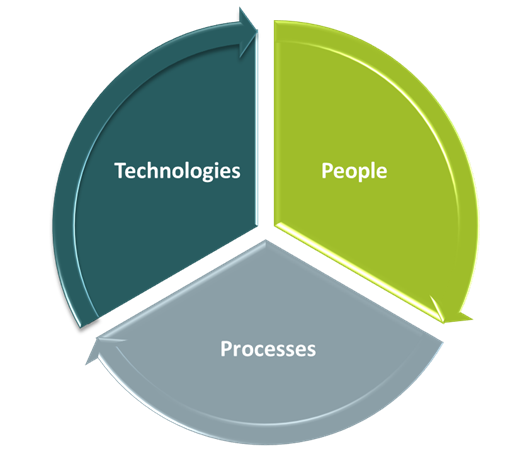The three foundations of good data governance
People, processes and technologies
Creating a clear data governance strategy is crucial to making sure data is handled in line with your organisation’s aims and industry best practice.
Data governance is often thought of as the management process by which an organisation protects its data assets and ensures compliance with data laws, such as GDPR. But it’s far broader than compliance. It’s a holistic approach to data and should have people at its very heart. People with defined roles, responsibilities, processes and technologies which help them make sure data (not just personal data) is properly looked after and wisely used throughout its lifecycle.
How sophisticated your organisation’s approach needs to be will depend on the nature and size of your business, the sensitivity of the data you hold, the relationships you have with business partners, and customer or client expectations.
Benefits of good data governance
There are many benefits this activity can bring, including:
- Minimising risks to the business, your employees, customers and suppliers
- Giving your people clarity around expected behaviours and best practices
- Embedding compliance requirements
A strong data governance approach can also help an organisation to make the most of their data assets, improve customer experience and benefits, and leverage competitive advantage.
Data governance – where to start?
There are three foundational elements which underpin successful data governance – People, Processes and Technologies.
People
Engaging with stakeholders across the organisation to establish and embed key roles and responsibilities for data governance.
Many organisations look to establish a ‘Data Ownership Model’ which recognises data governance is an organisational responsibility which requires close collaboration across different roles and levels, including the delegation of specific responsibilities for data activities.
Here’s some examples of roles you may wish to consider:
- Data strategy lead – such as Chief Data Officer / Chief Digital Officer
- Data protection lead – such as Data Protection Officer (DPO), if you have one
- Information security lead – such as Chief Information Security Officer (CISO) or Chief Technology Officer
- Information asset owners (or data owners) – leaders of business functions / teams which collect and/or use personal data for particular purposes. Such as HR, Marketing & Sales, Finance, Operations, and so on.
- Data specialists – heavy users of complex datasets, such as data analysts and data scientists.
- System owners – the people who manage the key systems which hold personal data, such as IT managers.
Processes
Think about all the processes, policies, operating procedures and specialist training provided to guide your employees and contractors to enable them to handle data in line with your business expectations – as well to comply with the law. For example:
- Data protection policies and provision of relevant training
- Specific procedures for handling individual privacy rights requests and data breaches
- Information security policies and provision of relevant training
- Standard Operating Procedures and handouts
Without these in place and regularly updated, your people can’t possibly act in the ways you want and expect them to.
In my experience, success comes from keeping these items concise, and as relevant and engaging as possible. They can easily be forgotten or put in the ‘maybe later’ pile… a little time and effort can really pay dividends!
Technologies
The technologies which underpin all data activities across the data lifecycle. For example, your HR, marketing & CRM, accounting and other operational systems you use regularly. Data governance requires those responsible for adopting technologies to ensure appropriate standards and procedures are in place which ensure appropriate:
- Accessibility and availability standards
- Data accuracy, integrity and quality management
- Privacy and security
Looking at privacy technology in particular, the solutions available have really progressed in recent years in terms of both their capability and ease of use. Giving DPOs and others with an interest in data protection clear visibility of where the risks lie, help to prioritise them and pointers to relevant solutions. They can also help provide clear visibility and oversight to the senior leadership team.
The ‘Accountability Principle’
Data governance goes hand in hand with accountability – one of the core principles under GDPR. This requires organisations to be ready to demonstrate the measures and controls they have to protect personal data and in particular, show HOW they comply with the other data protection principles.
Appropriate measures, controls and records need to be in place to evidence accountability. For example, a Supervisory Authority (such as the ICO) may expect organisations to have:
- Data protection programme, with clear data ownership & governance and regular reporting up to business leaders
- Training and policies to guide staff
- Records of data mapping exercises and processing reviews, such as an Information Asset Register and Record of Processing Activities
- Risk assessments, such as Data Protection Impact Assessments and Legitimate Interests Assessments
- Procedures for handling of individual privacy rights and data breaches
- Contracts in place between organisations which include the relevant data protection clauses, including arrangement for restricted international data transfers
- Data sharing agreements
Ready to get started?
If you’re keen to reap the benefits of improved compliance and reduced risk to the business, the first and crucial step is getting buy-in from senior leadership and a commitment from key stakeholders, so I’d suggest you kick-off by seeking their support.




